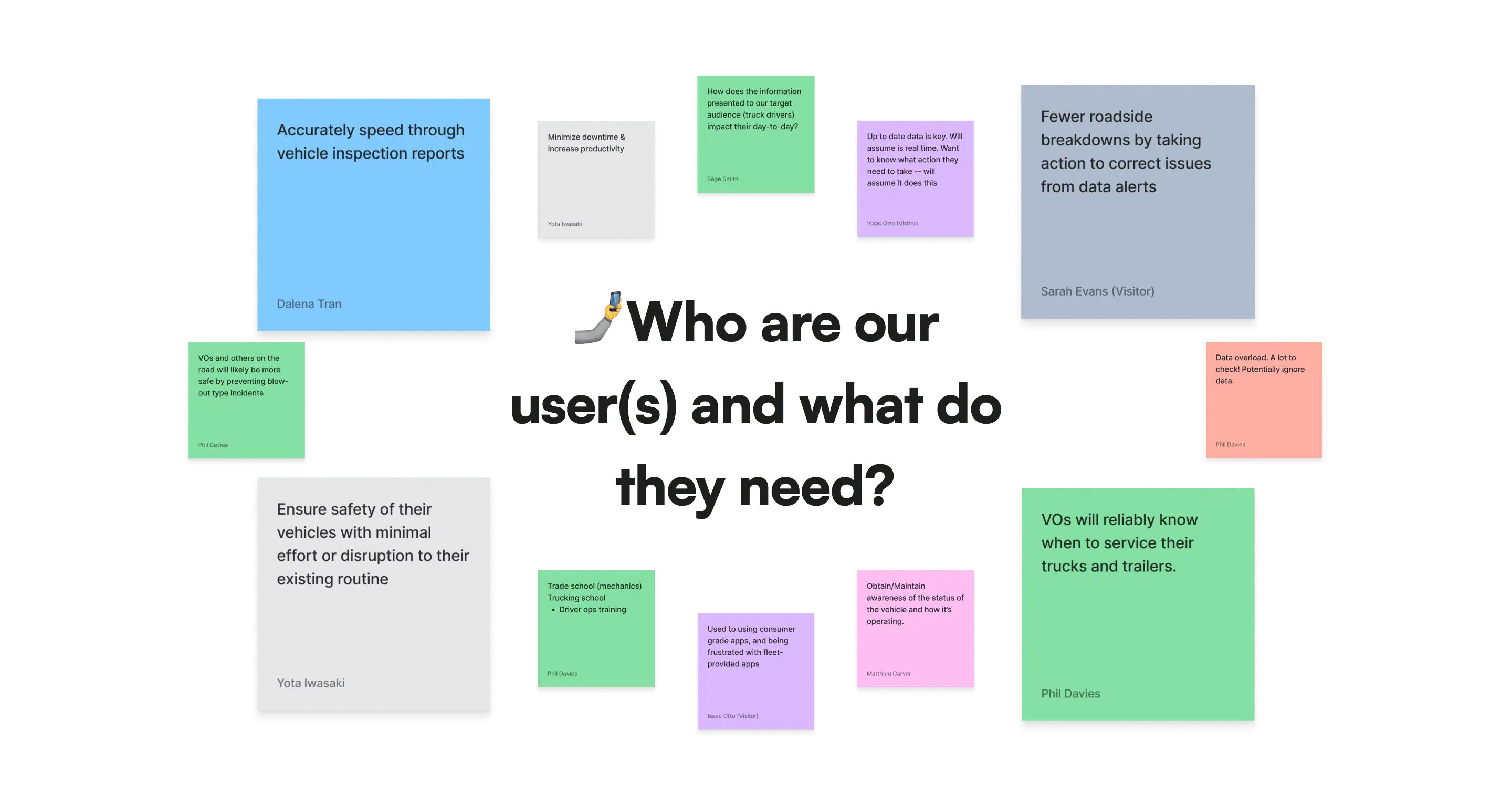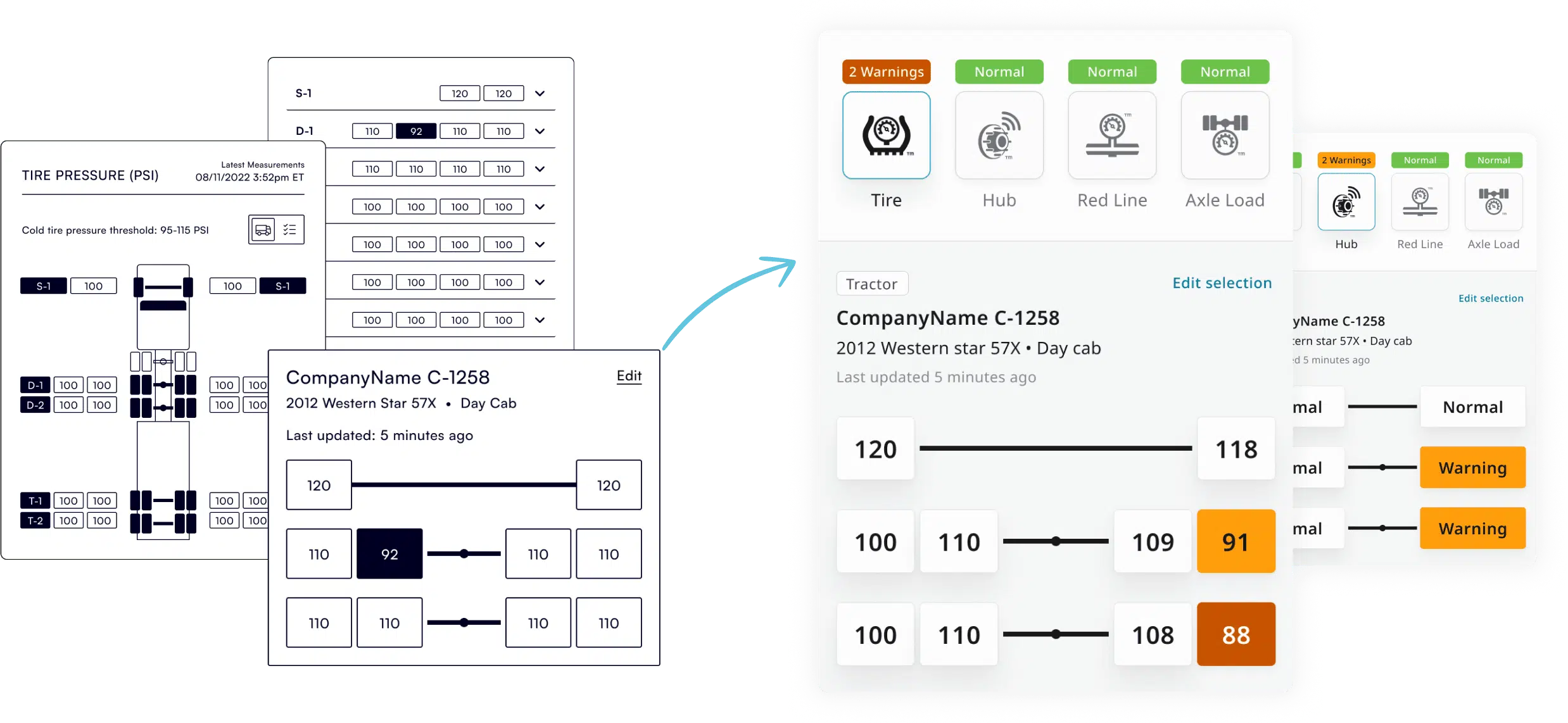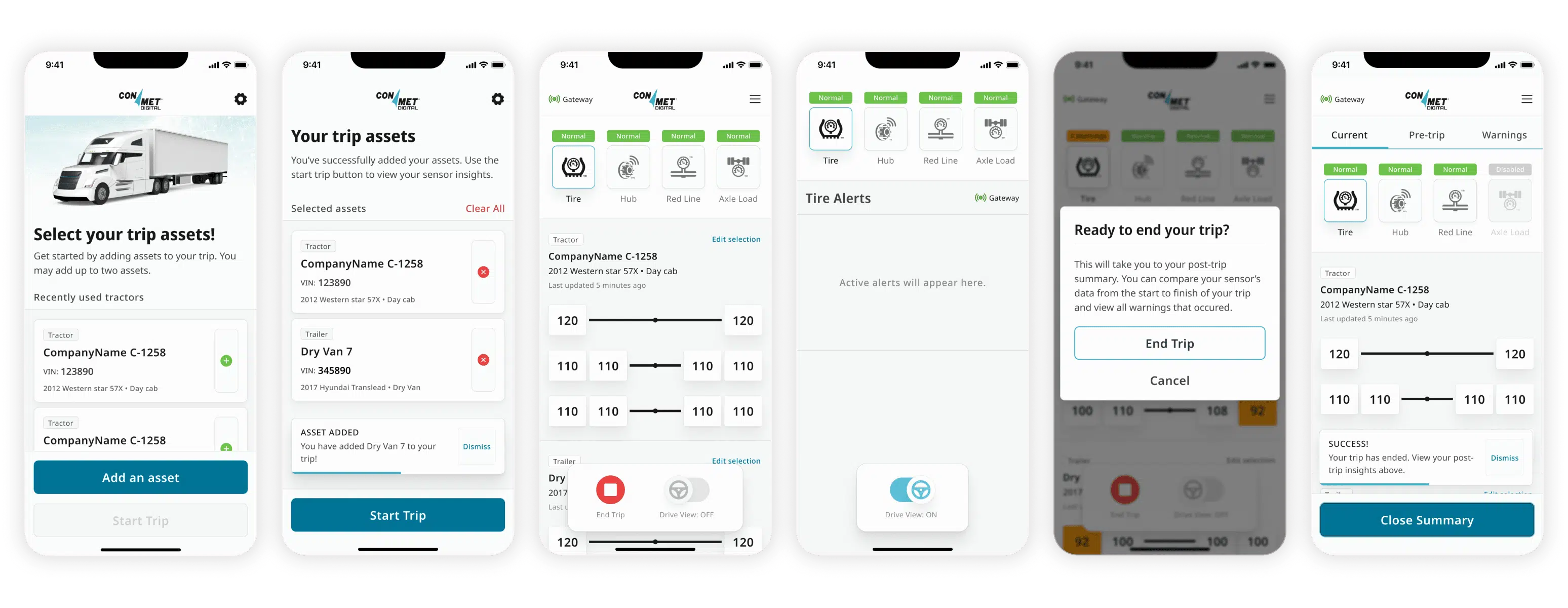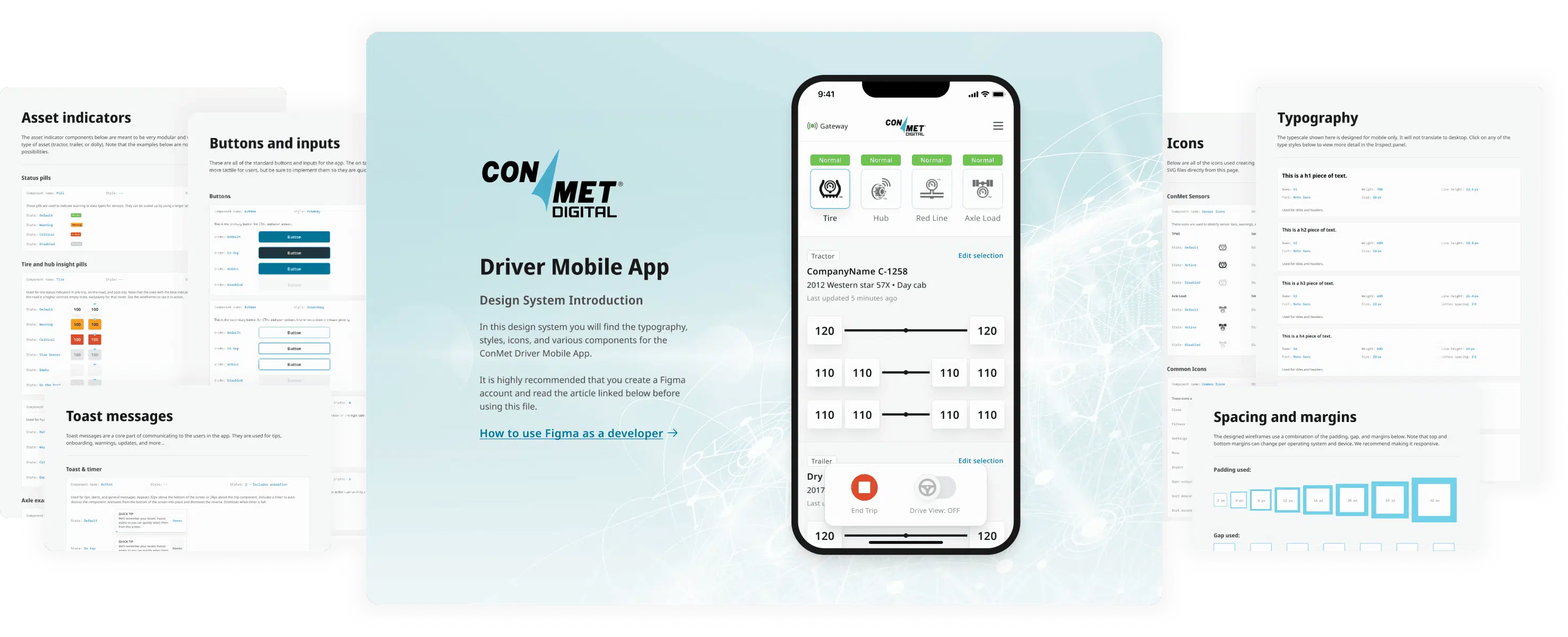
Creating a better tool to improve vehicle operator safety
Platforms
Mobile App
Deliverables
Research, UI/UX, Design System
Releasing this summer


Vehicle maintenance data made easy
ConMet is a leading global supplier of wheel hubs, aluminum castings, and structural plastics to original equipment manufacturers and aftermarket channels in the commercial vehicle industry. In 2019, they established ConMet Digital, a range of products and services of telematic technology, to provide holistic insights of the tractor-trailer ecosystem to help fleets improve their operations.
Our goal for this project was to create a mobile experience to aid operators in viewing vehicle maintenance data in real-time from ConMet Digital’s smart sensors. This app was designed with vehicle operators at the forefront in order to better improve the quality of their vehicle inspections and alert them to potential warnings about their vehicles while on the road.

Designing to optimize workflow
Our mobile app aimed to supplement the work tasks of vehicle operators in order for them to ensure their vehicle is safe to drive. To design a platform that met the needs of our primary user base, we conducted an empathy map workshop and preliminary research to gain insights into their daily routines and identify pain points. By learning more about their experiences, we could tailor the app to enhance their workflow and meet their goals.
To design an effective app, it was crucial to understand the data provided by ConMet Digital’s smart sensors. By thoroughly analyzing the information, we were able to determine ways to display this to our users in a comprehensive and actionable manner.

Speaking our user’s language
From our research, we discovered that most vehicle operators are running through their daily inspections relatively quickly. This meant that we needed to give our users a tool that was easy to read and interpret, not slow them down. Our team found that reading ConMet’s raw sensor data was overwhelming and didn’t give clear advice for vehicle operators. To give them clear recommendations on the different readings, we needed to show the data in a way that made sense for their work process.
Showing data in a visual format makes it easier to understand and reduces the user’s mental workload. When we displayed the sensor data on a diagram that was similar a real vehicle, it was much simpler to understand and make decisions about maintenance. For instance, by using a tire layout diagram that matched a real 18-wheeler to show tire pressure, participants in our usability testing were able to quickly spot problem areas and decide what steps to take.

Getting from point A to point B
During our user interviews, we found that vehicle operators have a step-by-step workflow. They use a checklist to make sure their vehicle is safe to drive and cargo are ready to go. Designing the site map and user journey was straightforward, but figuring out the best way to guide the user through the process took some creative thinking.
In our initial wireframes created confusion about how to accomplish step-by-step tasks because participants relied heavily on the bottom tab navigation. Giving users the option to go anywhere at any point created opportunities to get lost. So, we created a guided, streamlined navigation that better aligned with our their workflow. This model takes into account how our primary user group processes information and matches it to fit their needs.

Creating a safe drive-mode experience
One of the goals we set from the start was to provide a hands-free way for vehicle operators to check high-level data from ConMet’s sensors while on the road. This way, they can stay informed about the health of their trucks without having to take their hands off the wheel.
Designing a user-friendly interface for driving was crucial, as it required us to think about how the information would be viewed from a distance and prioritize important maintenance issues. To make the app easier to use while on the road, we made sure to display the information in a clear and concise manner, and also made the touchpoints larger to allow for easy interaction.

A smooth design handoff
Working with ConMet was a unique experience as we collaborated with their software development team in order to make sure the designs of our app could be feasibly built. We frequently met and created solutions together to ensure that our designs aligned with the capabilities of ConMet’s sensors. Our clear annotations on the high-fidelity wireframes and design system made for a smooth handoff to their development team.
Being able to collaborate on a cross-functional team creates the opportunity for digital products to reach their full potential. The team at ConMet were thrilled to see how well we could translate their goals and visually communicate their technologies.
